Backyard Medicinal Plants: Do You Have Herbal Remedies Right Under Your Nose?
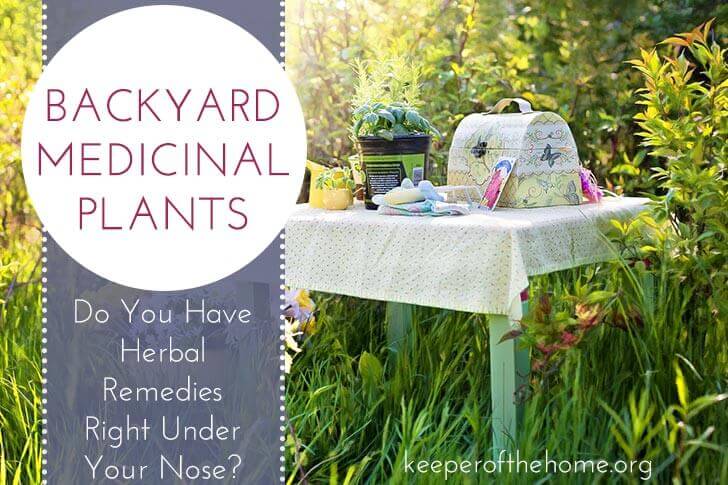
Written by Kate Tietje, Contributing Writer
Last summer, my husband spent a few hours cleaning up our yard. We had a lot of vines growing everywhere, some of which were poison ivy. We were worried the kids would get into it, so he took care of it. Unfortunately, he’s very sensitive to it, and despite an immediate cool shower and other precautions, he came down with a very bad case of it. It took a couple weeks to heal, and it was even bad enough for him to go to Urgent Care at one point (which didn’t help).
Right after he got better, I learned that the big-leafed plants growing in our yard (weeds!) were actually plantain, and could have helped ease the poison ivy suffering. In hopes that you don’t have a similar experience, I’m going to tell you about a few plants growing in your backyard that just might help you through some of your summer bumps, scrapes, and rashes. 🙂
A Note on Wild Crafting
“Wild Crafting” is the name given to harvesting plants that are growing wildly in your yard, parks, or other locations, which you identify and harvest. There are different theories about wild crafting. I don’t agree with all of them, because some of them are very “Earth-mother” and not especially Christian. But some simply make sense, and you should be aware of them.
- Appreciate what you’re harvesting — Where one might thank the plant/Earth, I think it’s good to say thanks to God for providing His miraculous creation, which can help us.
- Harvest only part of what’s available — Try to stick to 30 – 40% of what you find, leaving plenty more to keep growing. If you can, leave seeds behind to grow new plants too.
- Be cautious about location — Obviously, if it’s in your own yard, you know if it was sprayed or not and if it was exposed to, say, gasoline fumes. If not, be careful. A lot of good stuff grows along roadsides, but could be contaminated with exhaust. Parks and other areas may have been sprayed. Think carefully about where you’re harvesting.
- Use plants quickly — Pick what you can use or “process” within a day or so. That means if you’re drying it or tincturing it, you need to be prepared to do it within 24 hours. Wait to pick until you’re ready to use it.
- Make sure you’re picking the right thing! — There are sometimes look-alike plants, and occasionally these can be poisonous. Look at the pictures I provide as well as consulting a field guide. If you’re unsure, don’t pick it.
I would recommend buying a good field guide if you’re planning to do much wild crafting. The list I am providing is very limited and I am fairly new to wild crafting myself, having just learned to identify many of these last year. (My kids can identify them too, which I think is really cool!)
A good, region-specific guide can tell you when plants are in season, how to avoid look-alikes, and how to use the plants. Many have a lot of uses! This is your best bet if you find this subject as fascinating as I do. 🙂
Image by sandchen
Plantain
These aren’t the plantains you’re probably thinking of — the banana-like ones you can buy in the grocery store. These are large green leaves that grow commonly in lawns. We have lots in our yard and I see them in all the parks too. These leaves are edible; you can use them in salads if you like. But they also have some pretty awesome medicinal benefits!
Plantain can be used to treat the following conditions:
- Snake bites (root)
- Cuts and scrapes (leaf)
- Colic
- Burns
- Poison ivy
- Inflammation of the skin
- Detoxifying the liver and spleen
- Hay fever
- Tobacco addiction
- and more!
I encourage you to read more about this amazing plant that you very likely have growing in your yard, and learn to prepare it. Sometimes you can use the fresh leaves; other times leaves need to be crushed or mixed with something else. In some cases, the root is needed. This plant is very useful for many basic ailments, though — try it next time you have a cut, scrape, or poison ivy for sure!
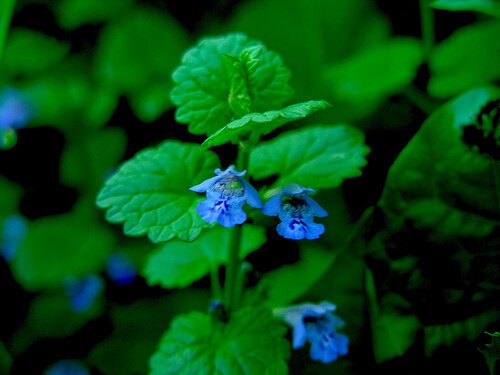
Image by JacobEnos
Creeping Charlie
This is another pervasive weed. I actually had so much of this growing that I asked my Facebook fans if they knew what it was. It’s in the mint family and has the rounded, toothed leaves like a mint plant, but smaller and with purplish edges and flowers. It doesn’t smell minty. You can find it growing most anywhere, and it is usually considered a nuisance. But it, too, has medicinal benefits. You might see this plant called “ground ivy” or “cat’s claw,” too — it has many names.
Uses for creeping Charlie*:
- To help colds (drink as a tea; mix with hot water and inhale the steam)
- Headaches
- Coughs
- Lead poisoning
- Detox (liver)
- Mono
*Pregnant and nursing women should not use this plant.
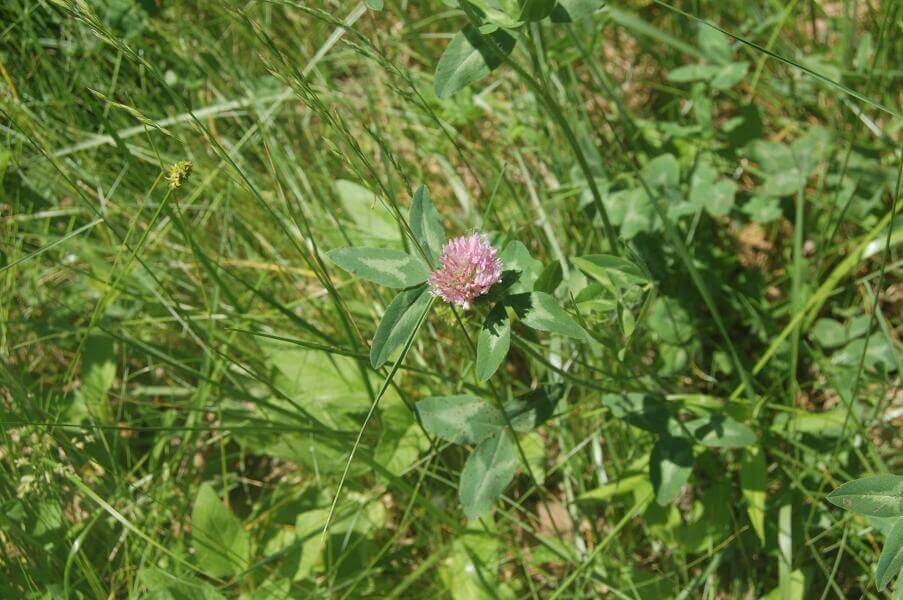
Red Clover
Recently, I’ve discovered red clover growing everywhere! It’s all over my back and front yards, as well as many parks that we frequent. It grows rapidly in the late spring and early summer. It also has many medicinal uses! I was aware of that, actually, before I found out how commonly it grows. The picture above is one I took in the park one day when we were foraging. 🙂
The first uses I learned for red clover were for women’s health. I drank it in a pregnancy tea blend when I was pregnant with my third — although that is controversial, because it has some estrogenic properties (the recipe without the red clover is still excellent though). It can be helpful for women in other stages of life, though.
Red clover may be used for:
- Bronchitis
- Asthma
- Menopausal symptoms
- Prostate illness
- Coughs/colds
- Skin lesions
- Cancers (according to some sources)
It’s a pretty neat herb! It’s easily available dried if you can’t forage it in your area. Make a tea or tincture from the flowers, or even a salve for skin issues.
This is controversial in pregnancy (Susun Weed and Rosemary Gladstarr, two herbal experts, disagreed on this point), but safe while breastfeeding for most women.
What plants do you find in your yard? How do you use them medicinally?
Disclaimer: I am not a certified medical professional of any kind and am not qualified to give you medical advice. My goal is to help to educate and inspire you to take responsibility for your own family’s health and make informed choices of your own, not to consult you on medical treatment.

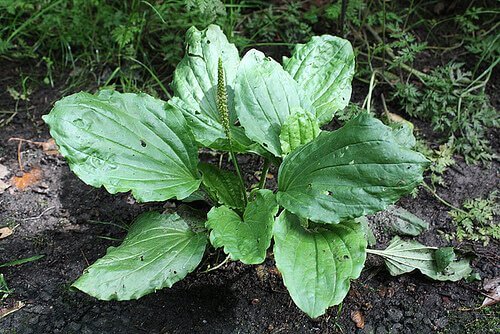
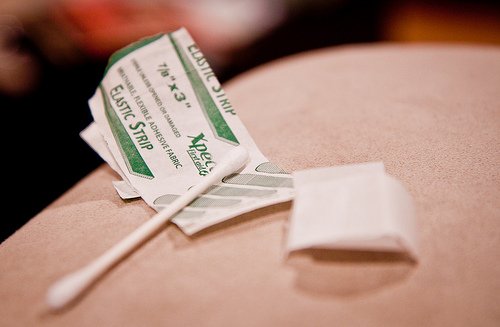

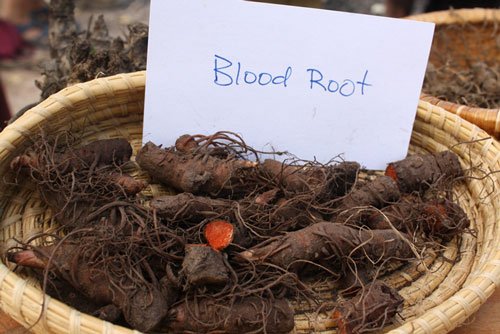
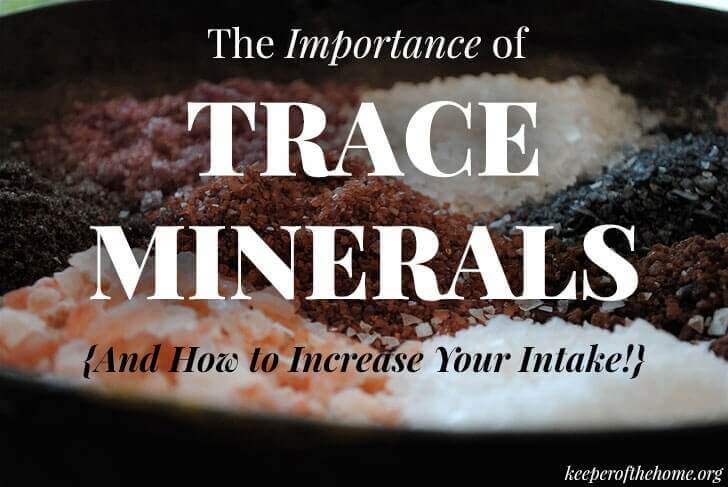


Can you recommend a book or guide?
Yes please I would love to learn more on this!
What a great post! I would love to know of a good guide, too.
Here’s one that I like: Practical Herbalism. http://www.amazon.com/Practical-Herbalism-Ordinary-Plants-Extraordinary/dp/1885653220/ref=sr_1_1?ie=UTF8&qid=1343685916&sr=8-1&keywords=practical+herbalism
I just wanted to provide an additional viewpoint on the ‘earth mother’ comment. Many of us that are mother earth types actually are Christian. When using the term, it is not literal and the earth is not worshipped as a deity or a persona. It is only recognizing the earth as our home (the term mother being associated with a home), which provides sustenance for our physical bodies (as our mothers also do). The earth is a magnificent living creation given to us by God and houses many of his other beautiful creations. We should strive to respect all living things, all creations of God. Appreciating it in its huuuuuge magnitude is not anti Christian. The earth is our home and after all, are we all not Keepers of the Home? 🙂 Thanks for providing this info, it’s amazing what is provided to us if only we look!
Thanks for that perspective. I know that Kate was referring to those who do not approach it from the same Christian perspective (and who do indeed worship “mother earth” as a deity or higher being), but I appreciate that the term may be used in a different way. I know that both Kate (and myself) would absolutely agree with you in our respect and appreciation for the earth as God’s magnificent creation!
Wow! I would never have really considered this….I don’t think we have much, though, since we live in a townhouse. But we keep our garden on my parents’ land, and I bet they have a bunch of medicinal plants they don’t know about!
Great post! I have plantain growing all over my yard but had NO IDEA it was useful medicinally.
We’ve actually been harvesting yarrow lately because of its fabulous benefits as a bug repellent and blood stauncher. We searched high & low until we found it at a local park where I harvested a little to transplant into my garden at home.
About a week later, my husband was mowing our back yard and said, “You’re not going to believe this…” We have yarrow growing all over our back and side yards! All these years, we’ve been mowing it so it never had a chance to develop the characteristic flowers. The ferny leaves are unmistakable, though, once we got down there to look! 🙂
We’ve sectioned off a little patch of it to let it grow and thrive. I’m so excited about my volunteer herbs!
About 2 weeks ago I learned about plaintain. That knowledge came in handy, when we were at the county fair. 1 of my children was stung, the stinger did not remain. I took 2 leaves chewed on them and then placed it on the area that was raised & about the size of a nickle…a while later looked at the skin & it was better so, much that I had a hard time telling when my child had been stung. I am so glad God made plantain grow in various places & can be found when needed!
I’ll have read about the other herbs you mentioned. I think we have creeping charlie in our yard.
In May, our family enjoyed a trip to a state park with the grandparents. After eating, our 3 sons and my husband set off to explore a trail near our picnic shelter. About 15 minutes later they came back–a panicked look on our oldest son’s face. He had walked right into a patch of poison ivy, and he is highly allergic. Our first course of action was to have him spread hand sanitizer all over his legs (the alcohol can stop the poison ivy oil). Then I had our middle son take me back to the poison ivy patch. Yep, right back to it. I stood nearby and carefully observed the plants growing. After pointing out wild blackberry and wild grapes, I found my plant: jewelweed. Harvesting a handful, we headed back. I opened the stem with my fingernail and had him rub it all over the exposed skin. The extra we stored in the cooler for later. That evening, after his shower, he rubbed jewelweed on his legs again. And he never did break out.
As for a book: there are many available on Amazon. Be sure you look for one that is specific to your region of the country!
Thanks for this. I just saw a creeping Charlie in my garden and was wondering if I should pull it out as I didn’t know what it was but now I’ll let it stay. Have you read James Wong’s books? He is all about growing and using herbs for medicinal use. I have large parts of my garden growing herbs thanks to him.
Yes, Plantain and Jewelweed are both very good for poison ivy when out and about. Once home and there is a breakout my favorite remedy is fresh lemon juice. You can cut a lemon and rub it all over the area, or you can ream the juice and apply with a cotton ball. fresh lemon juice will also help alleviate and kill poison oak on the skin. If one is allergic to lemons or does not have access, Bragg’s Raw Unpasteurized Apple Cider Vinegar (or another equally good raw vinegar) will also work. Swab on all areas affected.
One of my daughter’s came down with some poison oak a few years back and I did not know what it was till 3 days later when her eyes began to swell shut as I remembered a neice who used to look the same way from poison oak. I took fresh lemon and had said daughter rub it all over her rash, around her eyes, but not in her eyes, and though it stung for a few seconds, when she got up the next day her eyes were no longer swelled and her rash was half gone. We applied it again and within 3 days it was totally gone. Had she been more vigilant and applied the juice several times per day it would have been gone sooner.
Last year, my husband was working out of town and in the woods. He came down with poison ivy all over his shins and called me up. I had him buy a real lemon and he cut it into small slices and used it several times per day on his legs and the rash, itching, etc. was gone within a day or two.
Plaintain is not always available when one breaks out with poison ivy and oak which is why I am writing all of this. Raw vinegar and lemon juice are good for many skin rashes and work wonders.
We have Pampas Grass which I don’t like, and it doesn’t like me. If I brush up against it I will break out in big welts where the grass blades have touched my skin. My skin turns bright red and horribly itchy. A good swab with some Braggs Vinegar takes away the itch, the redness, and the welts!!! Great stuff.
I am also glad you posted this as everyone has a pharmacy in their yard; they just don’t realize it! 🙂
I have allowed passion vine to take over the west and north side of my property. Originally as a host plant for fritillaries and zebra longwing butterflies, I’m going to have to eradicate some of it unless I find a reliable source of info on it. On another blog, I read you could harvest and dehydrate all parts for tea which was good for insomnia.
I can’t find that information anywhere else, but I’d like to include it in other herbal tea mixtures, because the juice from the seed pulp tastes a little like limes. I think it could make a nice addition.
So is it safe or will it put us out at morning tea time? I’m going to go check the resource that Katie mentioned.
I am happy that you have shared this unto us. It is not easy to just pick and utilize. It is important to know the simple yet neglected details in choosing plants as remedies. Caution should be practiced. In my case, I pray that I pick the right ones. There are many plants that do look the same.
I also love the way you portray about the location of your choice to picks, I just got it from your idea. Minding the ones you pick must be put to common sense as these might be contaminated of some sort.
🙂
__
Linda
It’s a little known fact that roughly 40 percent of our prescription medicines come from plant extracts or synthesized plant compounds. Medicinal plants give us the ability to treat and cure many ailments including malaria, arthritis, diabetes, glaucoma, heart disease, thyroid disorders, skin conditions and many more. The U.S. National Cancer Institute has identified thousands of rainforest plants that are active against cancer cells, with likely thousands more of these medicinal plants, and their uses, yet to be discovered. For more information, visit http://www.herbalrainforest.com
This article inspired me to start an herbal garden of my own. I’ve been an enthusiast for herbal remedies for quite some time now and I’m not sure why I didn’t think of this before. Thanks for the article, this was some very good info!
Thank you! As a former creation worshiper, I have to agree in thanking God for his creations and providing the medicinal plants for our health.